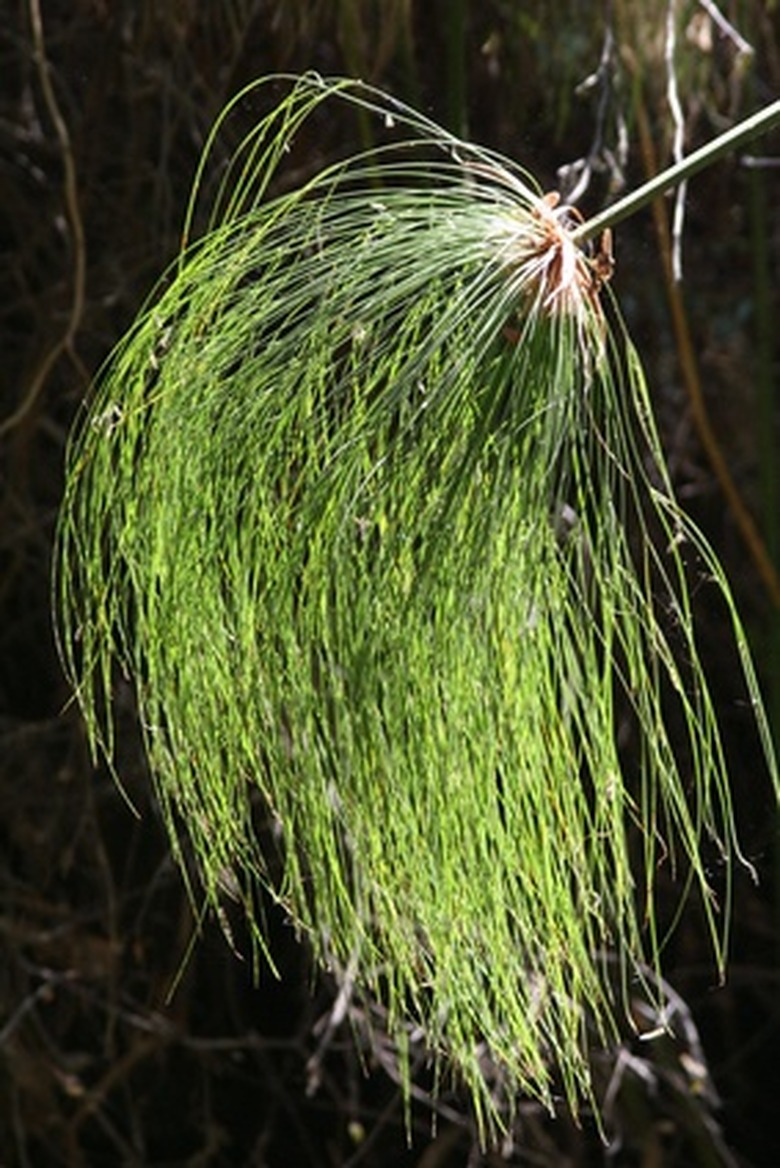Most Important Plants Grown In Ancient Egypt
Plants indigenous to ancient Egypt included flowers, reeds and herbs, all of which were useful to the people, making them an important part of the culture. Plants were used to make furniture, baskets and paper, while others had medicinal uses. Still others were, of course, used for food and for offerings to the gods.
Lotus
The lotus, or water lily, represented the region referred to as Upper Egypt. This is the first known instance of a nation recognizing plants as "national" symbols, according to Jane Howard's article "The Flowers of Ancient Egypt and Today," for TourEgypt.net.
The lotus plant was symbolic of more than just national pride. The water lily opens in the morning and closes at night, and being born of and sustained by water. This represented for ancient Egyptians the cycle of life, death and rebirth, Howard said.
- Plants indigenous to ancient Egypt included flowers, reeds and herbs, all of which were useful to the people, making them an important part of the culture.
Papyrus
Like the lotus, the papyrus reed was a national symbol, representing Lower Egypt. The papyrus reed, though, was also a plant put to practical use. The reed was used to make paper, sandals, mats and baskets, and even boats. The papyrus was used for fuel for fires and its flowers were used as food, both for humans and as offerings to the gods.
Flax
Flax plants provided the raw material for linen from which clothing was made. Young, immature flax stems were harvested, soaked, the fibers separated and ultimately made into thread. Vegetable oil was also extracted from flax plants and used for cooking, according to Egyptology Online.
- Like the lotus, the papyrus reed was a national symbol, representing Lower Egypt.
- The reed was used to make paper, sandals, mats and baskets, and even boats.
Like papyrus, the flax plant also provided raw material for goods, such as ropes and baskets. The seeds of the flax plant were used to make linseed oil, an ingredient used for medicinal purposes.
Wheat and Barley
Wheat and barley were commonly grown in ancient Egypt. The Nile River provided fertile ground for the grains and the Egyptians made good use of the plants. Both were used as a staple food and for brewing beer, a drink more common than wine to ancient Egyptians. Beer was a nutritious, sweet brew enjoyed by both adults and children, rich and poor, according to Ancient Egypt Online.
Herbs
The ancient Egyptians, similar to other ancient cultures, based their pharmacology on herbs and herbal distillation. Online education site Aldokkan Ancient Egypt notes that coriander and its seed were used for pain relief from headaches, muscle aches and arthritis. The seed was also used in poultices to treat mouth and skin ulcers.
- Like papyrus, the flax plant also provided raw material for goods, such as ropes and baskets.
- The seeds of the flax plant were used to make linseed oil, an ingredient used for medicinal purposes.
Additionally, acacia gum, derived from the Acacia tree, was used to ease digestive distress, such as gastritis, diarrhea and ulcers. Henna was used as an antiseptic for sores and to treat jaundice, leprosy and smallpox. Like other plants, henna was a multitasker; it was also a dye for the ancient Egyptians.
